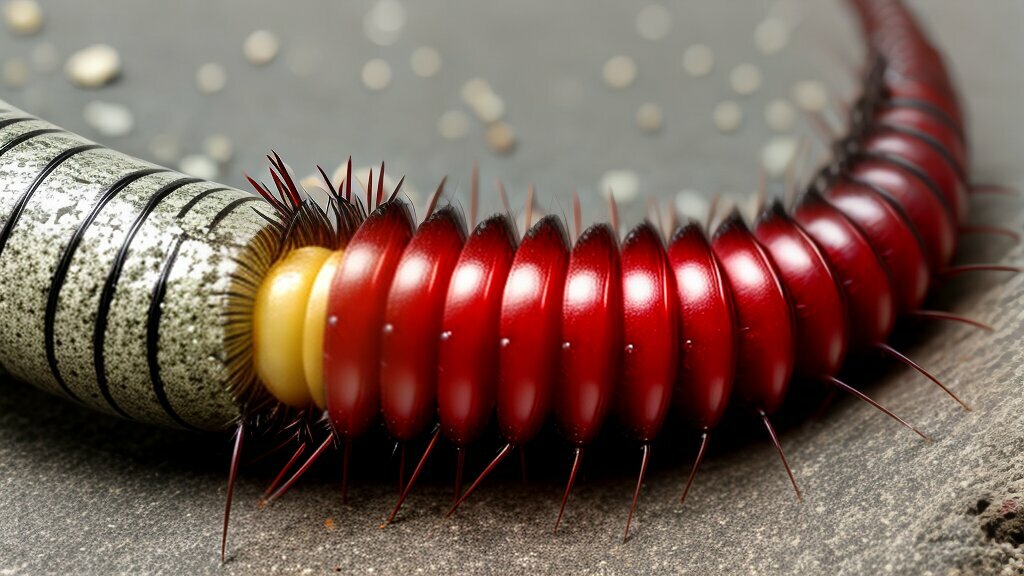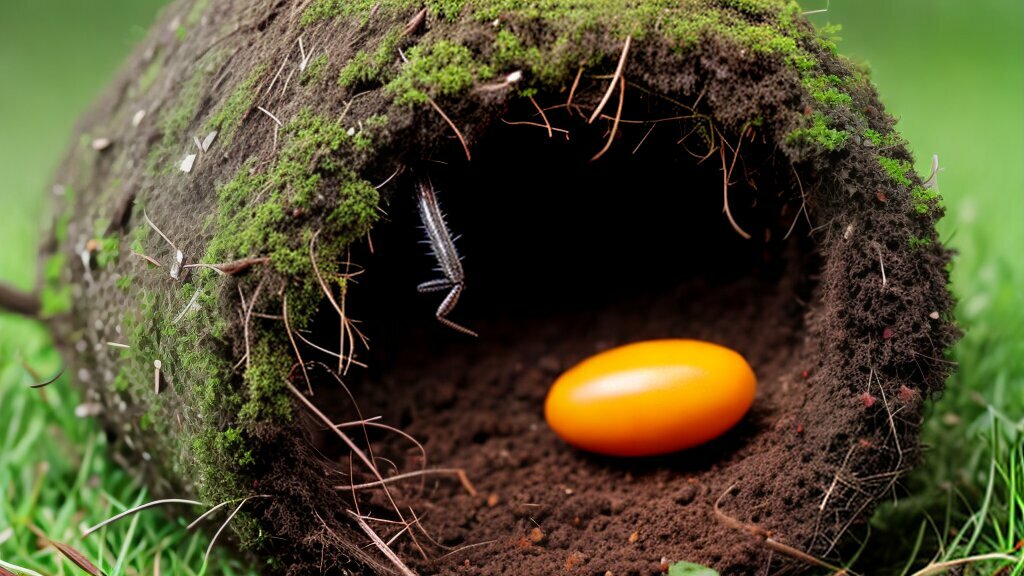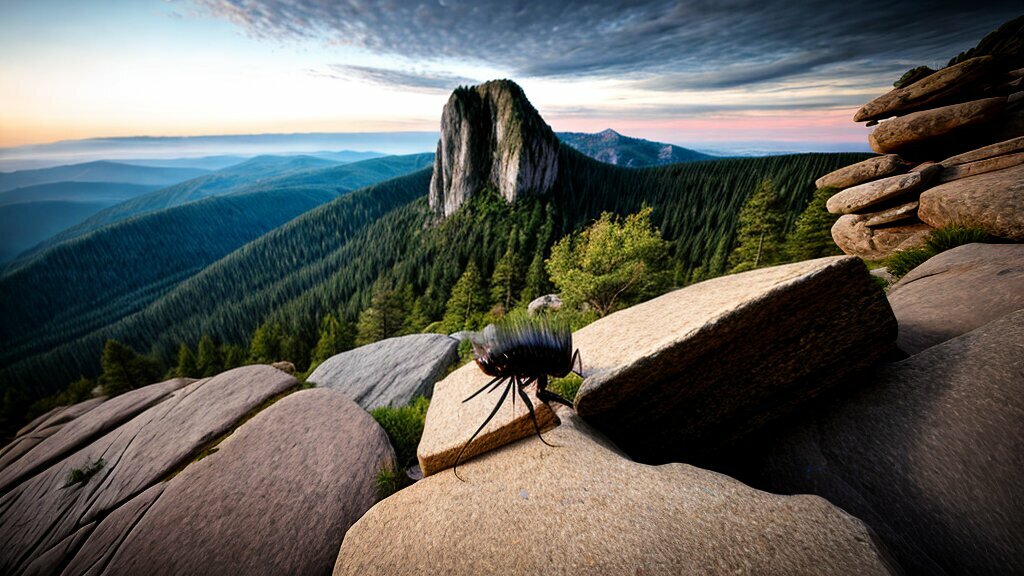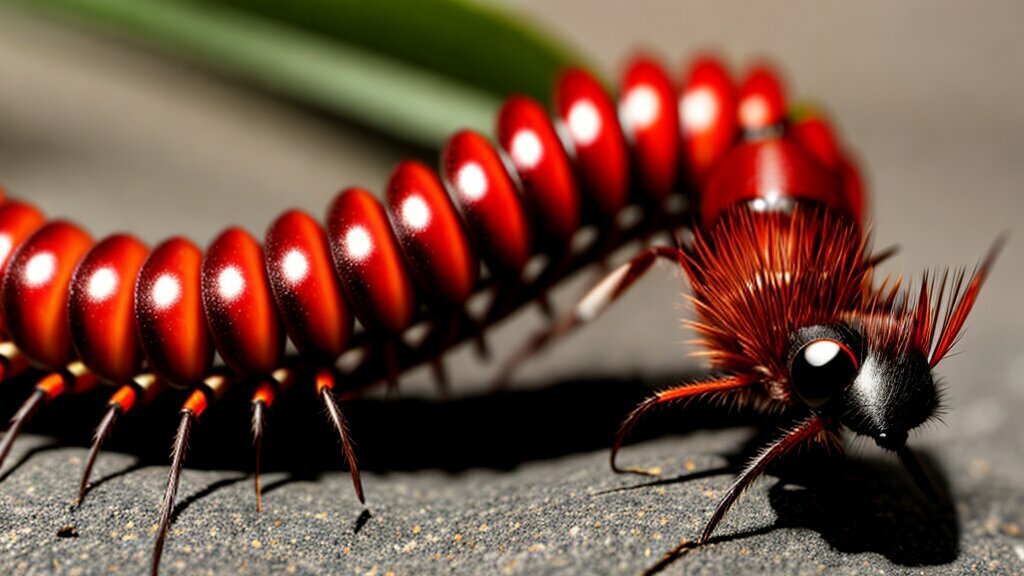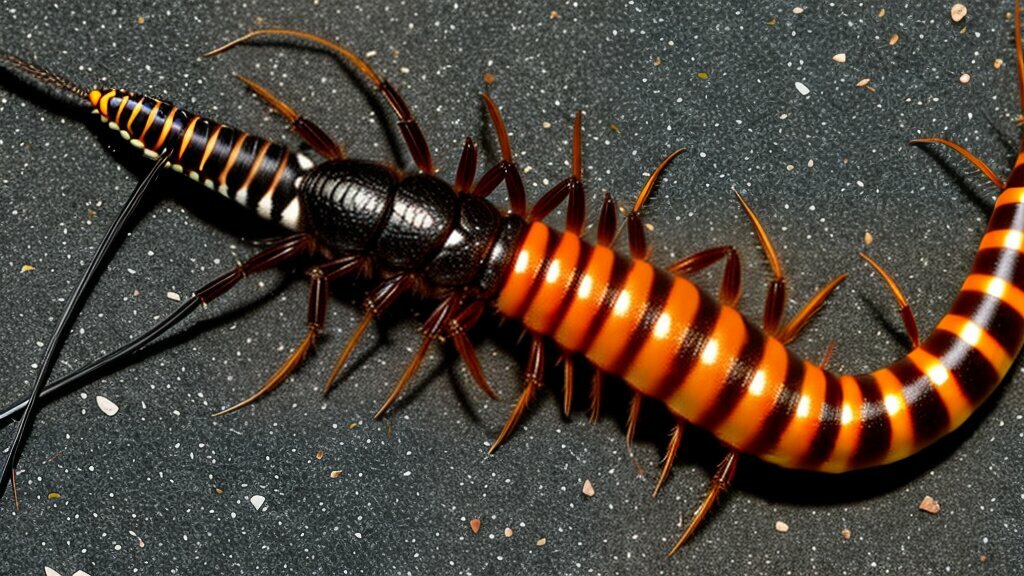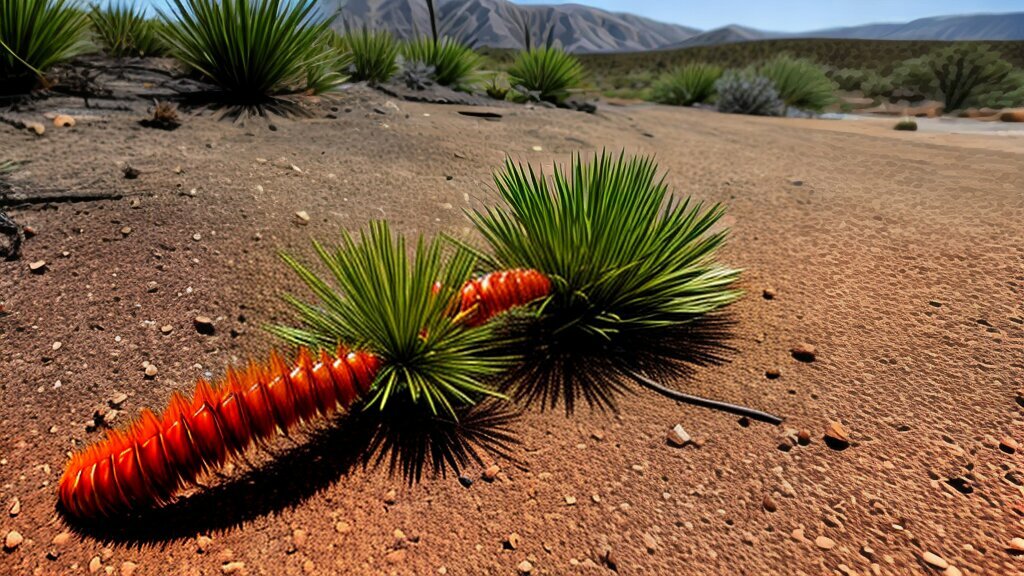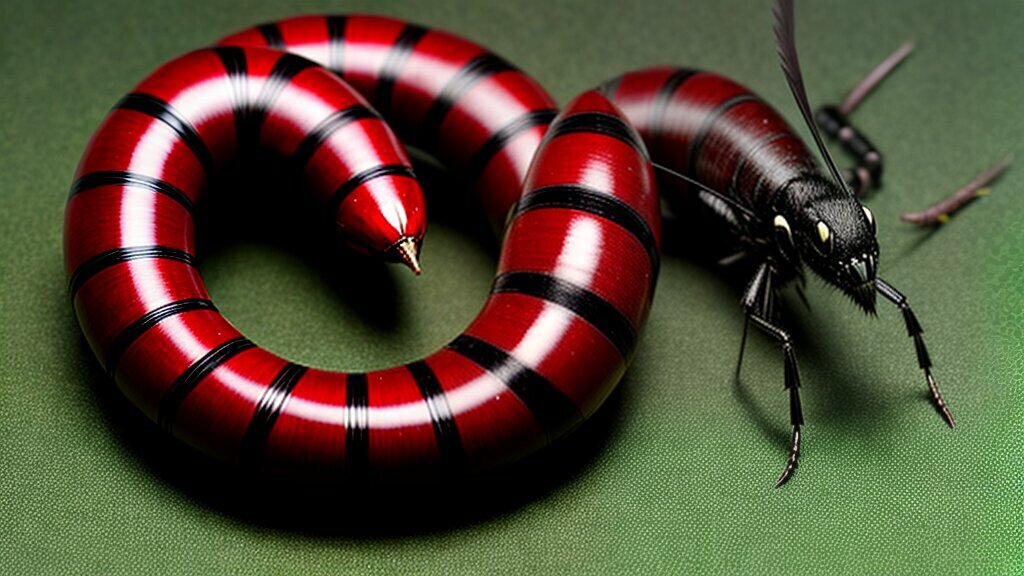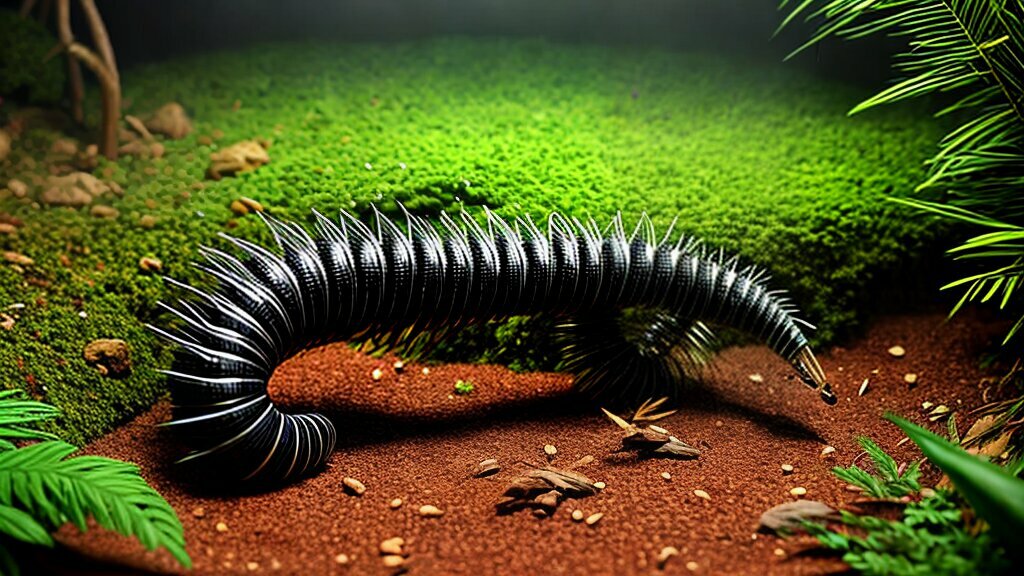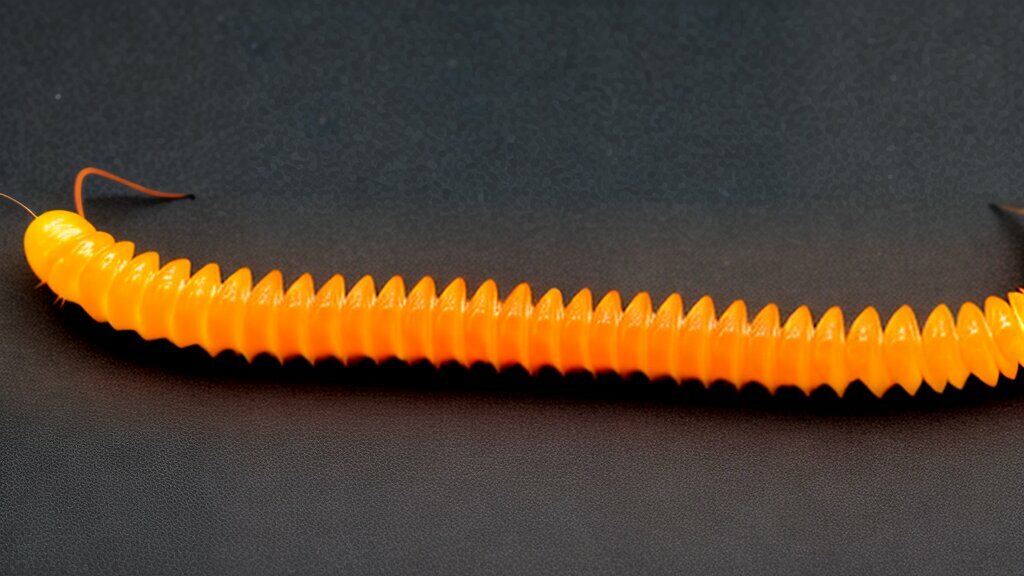Centipedes are fascinating creatures with a distinctive elongated body and many leg-bearing segments. But how long do they live? What factors influence their lifespan, and when do they reach the end of their life span? This article will explore the life cycle of centipedes and the various factors that affect their mortality.
Key Takeaways:
- Centipedes have a unique life cycle, from egg to adult.
- The average lifespan of centipedes varies among species and is influenced by environmental factors, predation, and disease.
- The natural end of a centipede’s life span is characterized by certain signs and circumstances.
Centipede Life Cycle
The life cycle of centipedes consists of several distinct stages, with each stage lasting anywhere from a few weeks to several months. Centipedes typically begin their life as an egg, which is laid by the female in a moist, protected location.
Once hatched, the young centipedes, known as nymphs, will go through a series of molts, shedding their exoskeletons as they grow larger. During this time, they will feed on a variety of small insects and other invertebrates.
As they continue to grow, centipedes will eventually reach adulthood, with most species reaching maturity within 2-3 years. Adult centipedes are generally more active and mobile than their younger counterparts, spending their time hunting and foraging for food.
The average lifespan of centipedes varies depending on the species and environmental factors. Some species may only live for a few years, while others can survive for up to a decade or more.
Centipede Life Cycle Table
| Life Cycle Stage | Description | Duration |
|---|---|---|
| Egg | Laid by female in a protected location | Varies by species |
| Nymph | Young centipede that hatches from egg | Several weeks to several months |
| Adult | Fully grown centipede that has reached maturity | 2-3 years for most species |
Factors Influencing Centipede Lifespan
The lifespan of centipedes can be influenced by various factors, both internal and external.
Firstly, environmental conditions play a significant role in determining the lifespan of centipedes. For example, temperature and humidity levels can affect their metabolism and ability to hunt for food, ultimately impacting their lifespan. Studies have shown that centipedes in hotter and more humid environments tend to have shorter lifespans as they use up their energy and resources more quickly.
Additionally, the availability of food and shelter can also affect centipede mortality. Centipedes require a steady supply of prey to survive, and if their habitat does not provide enough food or hiding places, they may not live as long as those with access to more abundant resources.
Centipedes are also vulnerable to predation and disease, which can significantly impact their lifespan. Common predators of centipedes include birds, reptiles, and amphibians, while parasites and fungal infections can also shorten their lifespan. In captivity, pet centipedes may be more susceptible to these types of health risks as they may not have access to their natural habitats and food sources.
Finally, genetic factors may also contribute to the lifespan of centipedes. Research has shown that some species may have longer lifespans compared to others, and certain individuals within a species may have genetic advantages that allow them to live longer lives.
Natural Death of Centipedes
Like all living creatures, centipedes eventually reach the end of their lifespan and pass away. While the exact lifespan of a centipede can vary depending on species and environmental factors, there are certain signs that indicate when a centipede is near the end of its life.
One common sign of an aging centipede is a decrease in activity level. As they age, centipedes become less active and spend more time hiding in their burrows. They may also lose their appetite and stop feeding altogether.
In addition to these behavioral changes, physical changes may also occur. Older centipedes may become weak and have difficulty moving, and their exoskeletons may become brittle and fragile.
While there is no single cause of death for centipedes, these physical and behavioral changes can make them more vulnerable to predators and environmental factors.
Ultimately, the natural death of a centipede is a normal and expected part of their life cycle.
Centipede Lifespan Variations among Species
Not all centipedes live for the same amount of time. The average age of a centipede varies depending on the species. Some species, such as the house centipede, can live up to seven years, while others may only live for a few months.
One of the factors that determine the lifespan of a centipede is its size. Larger species, such as the giant centipede, generally have longer lifespans than smaller species.
Another factor that influences centipede lifespan is their habitat. Centipedes that live in harsh environments, such as deserts, may have shorter lifespans than those that live in more temperate regions.
Some centipede species have adapted to living in environments where resources are scarce, and as a result, have shorter lifespans. The common house centipede, for example, has a relatively short lifespan due to its high metabolism and the fact that it requires a constant supply of food.
The reproductive habits of centipedes also play a role in their lifespan. Males of some species have a particularly short lifespan as they die soon after mating. Females, on the other hand, may live longer as they require more time to lay their eggs and care for their offspring.
Environmental Factors Affecting Centipede Mortality
The natural environment in which centipedes live has a significant impact on their mortality rate. Certain environmental factors can limit their life expectancy and increase the risk of premature death.
Temperature: Extreme temperatures can be fatal to centipedes. If temperatures become too low, they can suffer from hypothermia and die. Conversely, if temperatures become too high, they can suffer from heat stress and dehydration, which can also result in death.
Humidity: Centipedes require a certain level of humidity to survive. If humidity levels drop too low, they may not be able to recover and may eventually succumb to dehydration. On the other hand, if humidity levels are too high, it can create an ideal breeding ground for fungi and other pathogens that can harm centipedes.
| Environmental Factor | Impact on Centipede Mortality |
|---|---|
| Temperature | Can result in hypothermia or heat stress and dehydration |
| Humidity | May lead to dehydration or create a breeding ground for pathogens |
| Availability of Food and Water | May suffer from malnutrition or dehydration, leading to death |
Availability of food and water: Centipedes need access to water and food to survive. If they are unable to find a suitable source of either, they may suffer from malnutrition or dehydration, ultimately leading to death.
In addition to these factors, other environmental conditions such as pollution and habitat destruction can also affect the mortality rate of centipedes.
Predators and Diseases Impacting Centipede Lifespan
Centipedes face various threats from predators and diseases, which can significantly impact their lifespan.
Predators
Predators play a significant role in controlling the population of centipedes. Birds, reptiles, amphibians, and other arthropods are some of the predators known to feed on centipedes.
One of the most common predators of centipedes is the house centipede, which preys on other arthropods, including its own kind. Its ability to hunt and capture other centipedes in a fast-paced battle can significantly affect the lifespan of centipedes.
Other predators that can impact the lifespan of centipedes include birds, lizards, and rodents. These animals can significantly reduce the population of centipedes in a given area, thereby limiting their lifespan.
Diseases
Disease is another significant factor that can impact the lifespan of centipedes. Parasites and fungal infections are among the most common diseases that affect centipedes.
For example, a parasitic worm known as Mermithidae has been found to infect and kill centipedes. The worm attacks the centipede’s digestive system, causing it to lose nutrients and ultimately die.
Fungal infections, such as Beauveria bassiana and Metarhizium anisopliae, can also infect and kill centipedes. These fungi infect the centipede’s body, leading to loss of coordination and eventually death.
In conclusion, centipedes face a variety of threats from predators and diseases that can significantly impact their lifespan. Understanding these threats is crucial for conservation efforts and maintaining a healthy ecosystem.
Centipede Lifespan in Captivity
While centipedes in the wild may face a variety of challenges that can impact their lifespan, those kept as pets in captivity may have different experiences. In general, pet centipedes tend to live shorter lives than their wild counterparts, often only reaching a fraction of their potential lifespan.
One reason for this is that captive centipedes may not have access to the same variety of food and environmental stimuli as those in the wild, which can lead to a shorter lifespan. Additionally, improper care or handling by their owners can also contribute to a shorter lifespan.
However, with proper care and attention, it is possible for pet centipedes to live longer than average. Owners should ensure their centipedes are given appropriate housing, diet, and environmental conditions to mimic their natural habitat as closely as possible. Regular cleaning and monitoring for signs of illness or injury can also help to promote a healthy lifespan.
It is important to note that not all species of centipedes are suitable as pets, and some may require specialized care or may be dangerous to handle. Owners should do their research and consult with a veterinarian or experienced breeder before bringing a centipede into their home.
Longevity Research and Centipede Lifespan Studies
Scientific research into the lifespan of centipedes is relatively limited, owing to their nocturnal habits and elusive nature. However, there have been a few studies aimed at better understanding the longevity of these fascinating creatures.
One such study, conducted by researchers at the University of Kansas, examined the lifespan of the North American giant centipede, Scolopendra heros. The study found that these centipedes typically live for approximately 5-7 years in the wild, although they may live longer in captivity with proper care.
Another study, published in the Journal of Invertebrate Pathology, looked at the impact of parasitic nematodes on the lifespan of the house centipede, Scutigera coleoptrata. The study found that infected centipedes had a significantly shorter lifespan compared to uninfected centipedes, with a median lifespan of just 13 months versus 28 months for uninfected individuals.
While these studies provide valuable insights into the lifespan of certain centipede species, more research is needed to fully understand the factors that impact their mortality and longevity.
“One such study, conducted by researchers at the University of Kansas, examined the lifespan of the North American giant centipede, Scolopendra heros.”
Conclusion
In conclusion, the lifespan of a centipede can vary greatly depending on a variety of factors. While the average lifespan of a centipede is around 2-3 years, some species can live up to 10 years.
Environmental conditions, such as temperature, humidity, and availability of food and shelter, can greatly impact the mortality rate of centipedes. Predators and diseases can also play a significant role in their lifespan.
When a centipede reaches the end of its life span, signs such as slowed movement, lethargy, and loss of appetite may indicate that it is nearing death.
While there has been some scientific research conducted on centipede lifespan, more studies are needed to fully understand the factors that affect their mortality.
Overall, understanding the lifespan and mortality of centipedes can be helpful for those who keep them as pets or are interested in their biology.
FAQ
Q: When do centipedes die?
A: Centipedes typically die at the end of their life span, which can vary depending on various factors.
Q: What is the life cycle of a centipede?
A: The life cycle of a centipede includes different stages from egg to adult. The average lifespan of centipedes varies among species.
Q: What factors influence centipede lifespan?
A: Factors such as environmental conditions, predation, and disease can impact the lifespan of centipedes. These factors also contribute to the overall centipede mortality rate.
Q: How do centipedes naturally die?
A: Centipedes typically reach the end of their life span naturally. Signs and circumstances that may lead to their death include aging and degradation of their bodily functions.
Q: Do centipede lifespans vary among different species?
A: Yes, there are variations in lifespans among different centipede species. Some species may live longer or shorter lives than others.
Q: What are the environmental factors that affect centipede mortality?
A: Environmental factors such as temperature, humidity, availability of food, and shelter can influence the mortality rate of centipedes.
Q: What predators and diseases impact centipede lifespan?
A: Common predators of centipedes include birds, reptiles, amphibians, and parasites. Diseases can also have an impact on the lifespan of centipedes.
Q: How long do centipedes live in captivity?
A: The lifespan of centipedes kept as pets in captivity may differ from that of their wild counterparts. It can be influenced by factors such as care, diet, and environment.
Q: Is there any research on centipede longevity and lifespan?
A: Scientific research and studies have been conducted to determine the longevity and lifespan of centipedes. These studies have provided valuable insights into their life span.
Q: Conclusion
A: In conclusion, centipedes die at the end of their life span, which is influenced by various factors such as environmental conditions, predation, and disease. The longevity of centipedes varies among different species.

